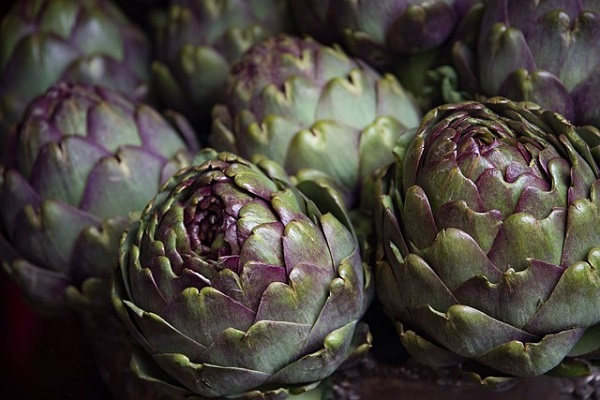Words: Team ThinkWellness360
The artichoke plant is an affiliate of the thistle, or sunflower family. The cones, or spherically-shaped buds, are enveloped by overlapping outer scales [bracts] and are eatable at the base. At the centre of the bud is an ‘uneatable’ thistle [choke]. The edible ‘heart’ of an artichoke is the round, tender, firm base of the bud that is exposed after pulling off the petals. Commercially sold artichoke hearts are the tender central portions of small artichokes that have almost no choke. Their taste is deftly nutty and somewhat bitter.
Varieties
The most popular variety of artichoke is the Green Globe. Other varieties, include the Violetta and the Purple Roscoff — they have clues of purple either on the scales, or the choke itself.
Origin & Botanical Facts
A native to the eastern Mediterranean region, artichoke’s use was documented by the ancient Greeks and Romans. Today, most of the European supply of artichokes is still grown around the Mediterranean Sea. Artichokes were first introduced to the United States in the 19th century by European immigrants; they soon found their way to the mid-coast region of California, where most of the domestic crop is cultivated today.
The artichoke is an undeveloped bud — when left to bloom, it vaunts of a bright-purple, thistle-like flower that can be found at outdoor farmers’ markets. They can be dried for use in flower arrangements. The size of an artichoke bud is established by the stalk on which it grows, albeit it may not be suggestive of quality. Thick stalks, usually concentrated around the centre of the plant, produce large artichokes; thed the thinner side stalks produce smaller artichokes.
Uses
Artichokes hand-picked in the fall, or winter, months may have bronze-tipped leaves, or a somewhat grey tint — a sign of exposure to frost. This should not affect the flavour of the artichoke. Squeezing the artichoke just a tad should prompt a screech — more so, when the leaves are still plump and crunchy. Although the artichoke looks tough and hardy, it should be kept in the refrigerator for no more than 4-5 days. A sprinkling of water in a plastic bag will help maintain the moisture of the artichoke. Make sure not to trim, cut, or wash before storing. Artichokes are most often boiled, or steamed; they can be eaten hot, or cold. Each petal is pulled off and the base is plunged into liquefied butter, or lemon juice.
Remember: only the tender portion at the base of the petal is edible. The thinner rose-coloured petals can be bitten off, or removed, to find the choke below the uneven outer petals. After removing the choke, the heart can be eaten whole. The hearts can be added to pasta sauces, or green salads, and to top pizzas. Whole steamed artichokes can be filled with well-seasoned stuffing and served as they are, or baked.

